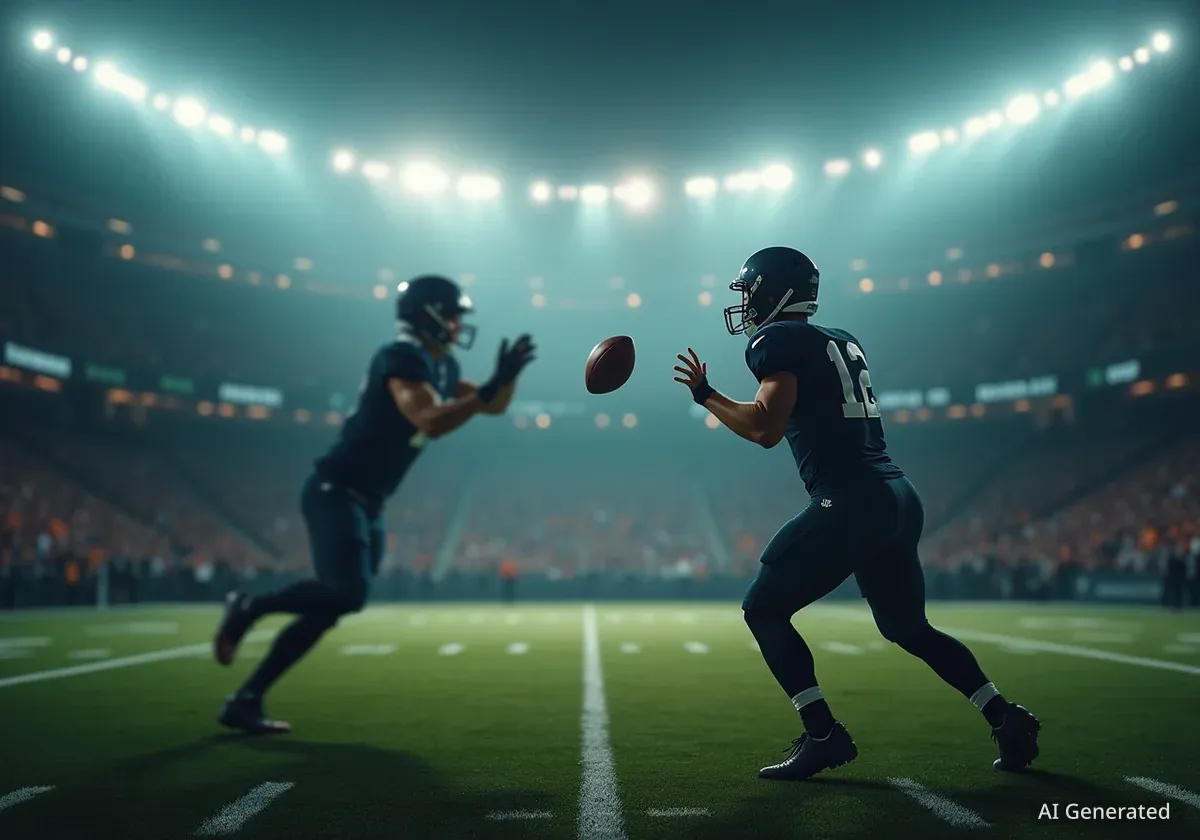As the 2025 NFL season progresses, a clear picture is forming of the financial landscape for 2026. An analysis of projected salary cap space and guaranteed player contracts reveals a significant divide across the league. Some teams are positioned for aggressive roster moves, while others face difficult decisions due to heavy financial commitments.
This early look, which accounts for estimated cap carryover and assumes rosters of 51 players, separates teams into four distinct financial categories. These groupings highlight which organizations have the flexibility to build and which are constrained by past spending, setting the stage for a dynamic offseason in 2026.
Key Takeaways
- Teams are analyzed based on two key metrics: projected 2026 salary cap space and total guaranteed money owed to players.
- A small group of teams with high cap space and low guarantees, like the Tennessee Titans, are in the strongest financial position for rebuilding or contention.
- Several playoff contenders, including the Buffalo Bills and Detroit Lions, have limited cap space and high guarantees, indicating a reliance on contract restructures.
- Struggling teams with poor cap health, such as the New York Giants and Cleveland Browns, face the most challenging path forward due to inflexible financial commitments.
The Four Quadrants of NFL Financial Health
To understand the future financial flexibility of each NFL team, it's helpful to categorize them based on available salary cap room and existing guaranteed salary commitments. This approach creates a clear framework for assessing which teams are best positioned for success in 2026 and beyond. Each quadrant represents a unique strategic situation, from aggressive acquisition potential to necessary cost-cutting measures.
Category 1: High Cap Space, Low Guarantees
Teams in this category are in the most enviable financial position. With substantial cap room and minimal binding contracts, they possess maximum roster flexibility. This freedom allows them to be major players in free agency, absorb large contracts via trades, or extend their own emerging talent without significant constraints.
For a team like the Tennessee Titans, this financial health provides a clear path for a rebuild after a difficult 2025 season. They can reshape their roster around a new core of players. For teams already in contention, this status allows them to add key pieces to solidify a championship run, potentially making them active buyers at the 2025 trade deadline.
Strategic Advantage
Teams with high cap space and low guarantees can outbid competitors for top free agents and are better equipped to handle unexpected player performance declines, as they have fewer long-term, high-cost commitments.
Navigating Moderate and Constrained Financials
Not all teams enjoy the luxury of extensive cap space and low commitments. Many organizations must navigate more complex financial situations that require careful planning and strategic decisions, such as contract restructures or difficult roster cuts.
Category 2: High Cap Space, High Guarantees
This group of teams has healthy cap space but has already committed significant guaranteed money to veteran players. While their overall cap situation is positive, their flexibility is somewhat limited by these large, existing contracts. Most franchises in this position will likely explore contract restructures to create additional spending power for free agency.
"Restructuring a contract often involves converting a player's base salary into a signing bonus, which can then be spread out over the remaining years of the deal. This lowers the current year's cap hit but increases future cap charges."
The New York Jets are a notable team in this category. Despite having one of the better cap positions in this tier, persistent on-field struggles could lead to scrutiny of their recent high-value contract extensions. If the team's performance does not improve, questions may arise about the long-term value of these financial commitments.
What Are Guaranteed Contracts?
In the NFL, guaranteed money is the portion of a player's contract that the team is obligated to pay regardless of injury, skill, or being cut from the roster. High guaranteed commitments reduce a team's ability to move on from underperforming players without incurring significant financial penalties, known as "dead money."
Category 3: Low Cap Space, Low Guarantees
This is a less common but challenging situation. These teams are dealing with the consequences of past salary cap management, often carrying large cap charges from previous deals even though the remaining guaranteed money is low. This scenario typically results from pushing cap hits into future years.
Organizations in this quadrant may be forced to make drastic roster changes. A common strategy is to release multiple veteran players, absorb the resulting dead money for one season, and effectively reset their salary cap for the following year. This can lead to a difficult, non-competitive season but provides a cleaner financial slate for the future.
The Most Challenging Financial Position
The final category represents teams facing the most significant financial hurdles. With limited cap space and large, locked-in player salaries, these franchises have very little room to maneuver and must make difficult choices to become compliant with the salary cap.
Category 4: Low Cap Space, High Guarantees
This is the most restrictive financial position in the league. These teams have heavy financial commitments to their current roster and little available cap space to improve it. Their strategies for managing the offseason differ based on their competitive status.
For successful, playoff-caliber teams like the Buffalo Bills and Detroit Lions, the approach is often to "double down." They will likely restructure existing contracts with their star players to create immediate cap relief, allowing them to retain their core and remain competitive. This strategy, however, pushes more financial obligations into the future.
The situation is far more concerning for struggling teams in this quadrant, such as the New York Giants and Cleveland Browns. According to analysts, there is little justification for non-contending teams to have such restrictive financials. Being locked into expensive, long-term contracts without corresponding on-field success puts the front office in a difficult position, limiting their ability to rebuild or improve the roster through free agency or trades.
The Impact on Team Building
- Flexibility is Key: Teams with more cap space and fewer guarantees can adapt quickly to injuries or opportunities.
- Long-Term Vision: Poor cap management can hamstring a franchise for multiple seasons, making it difficult to escape a cycle of mediocrity.
- Competitive Windows: Successful teams often operate with tight caps, but struggling teams with the same constraints face a much tougher path to improvement.
As the 2026 offseason approaches, the financial health of each team will be a critical factor in shaping league-wide transactions. Teams with flexibility will dictate the market, while those with constraints will be forced into reactive and often difficult decisions.





